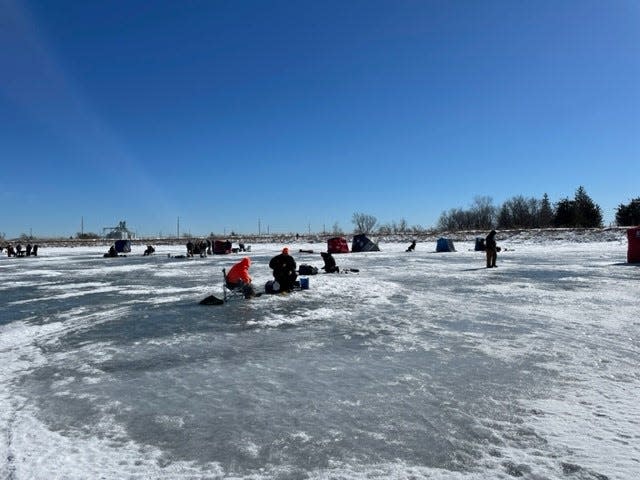
Nov. 21—The Falls City Council voted 3 to 1 Wednesday night to approve a proposed zoning code change that would be the first step in allowing a large-scale, eco-friendly, solar renewable energy project near the Love Canal site.
The New York State Energy Research and Development Authority (NYSERDA) had requested that the council change the zoning of 16 acres of city-owned land, south of Colvin Boulevard, north of the LaSalle Expressway and between 93rd and 95th streets from R1-A (Single Family Residential) to OS (Open Space). The change would allow for the land, that was once the location of the Griffin Housing Development, in what is known as the Love Canal neighborhood, to be reclaimed and developed into the Vincent Welch Build-Ready Solar project.
The proposed solar farm site is a short distance from what was the Hooker Chemical Company’s Love Canal landfill, described by Gillian D. Black, director of NYSERDA’s Build-Ready program, as “directly west of the fenced and capped Love Canal site.”
Advertisement
Advertisement
The zoning change had been unanimously recommended to the council by both the Niagara County and Niagara Falls planning boards.
Council Chair James Perry (D), along with members Traci Bax (R) and David Zajac (R), voted to approve the zoning change. Council member Donta Myles (D) was opposed.
Acting Falls Corporation Counsel Thomas DeBoy told the council members that the re-zoning was a first step for the proposed solar farm project. He told members that NYSERDA had to do “further testing” on the suitability of the Love Canal site.
That prompted Myles to inquire what NYSERDA was “putting the horse before the cart.”
Advertisement
Advertisement
“Before we do (re-zoning), let NYSERDA do more testing,” Myles said.
The council member also expressed concerns about a report that a pair of sheep had been found dead at the site of a solar farm on Grand Island and asked how city officials could know “for sure” that the land in question could not be redeveloped for housing.
“No developer has expressed an interest in developing anything at that location, and you know why,” DeBoy replied. “Because of its location near Love Canal.”
NYSERDA officials have previously said that they were in “the early stages” of assessing the feasibility of the solar farm project. They said that their assessment would include a determination of whether the location of the solar farm would allow it to be connected to the larger New York electrical grid, and if so, what the cost of the connection would be.
Advertisement
Advertisement
More in U.S.
New York State says the Build-Ready program is designed to “advance large-scale renewable energy projects on difficult sites that the private sector isn’t developing.” Among the “difficult sites” that Build-Ready says it considers for development are brownfields, landfills, existing or abandoned commercial and industrial sites, dormant electric generating sites, former mines and closed prisons and parking lots.
When a site is identified for redevelopment, Build-Ready says it undertakes the project design, engineering, permitting, and electrical grid interconnection review as well as developing a host community benefit package.
“We act as a private developer would to bring the land back on the tax rolls,” Gillian D. Black, director of NYSERDA’s Build-Ready program, has said. “We negotiate PILOT (payment in lieu of taxes) agreements, community benefit agreements, we act like a private developer to bring difficult sites back for renewable energy generation, but we don’t compete with the private sector.”
The Love Canal site was first proposed to NYSERDA by the administration of Mayor Robert Restaino and Black said there have been ongoing discussions of the project with the mayor and his staff.
Advertisement
Advertisement
The plan for the site calls for the use of a ballasted solar electric system. Such a system uses concrete weights to anchor the framing that holds the panels used for solar energy collection to the ground.
Black said those systems are “well-engineered for contaminated properties like the Love Canal” because they do not need posts or post holes to be held in place.
“There is no need to puncture the ground,” Black said, “which is the best for capped properties (like the Love Canal) where the caps can or should not be penetrated.”
EMEA Tribune is not involved in this news article, it is taken from our partners and or from the News Agencies. Copyright and Credit go to the News Agencies, email news@emeatribune.com Follow our WhatsApp verified Channel





